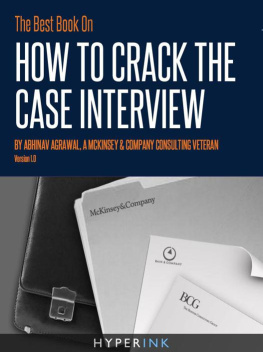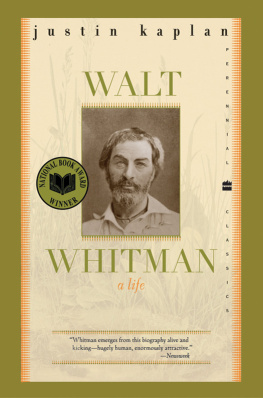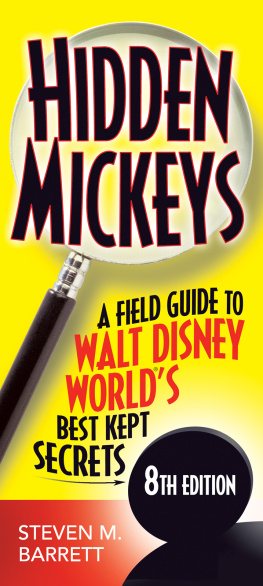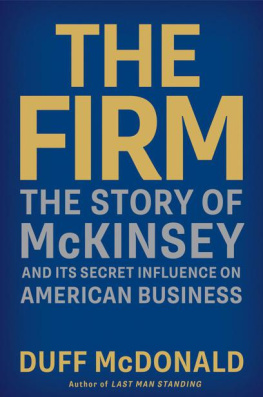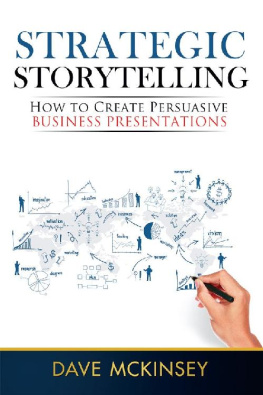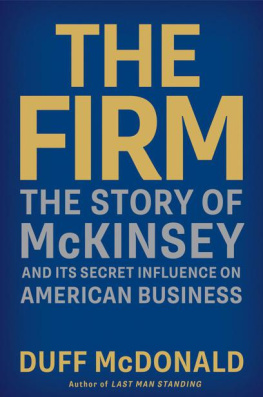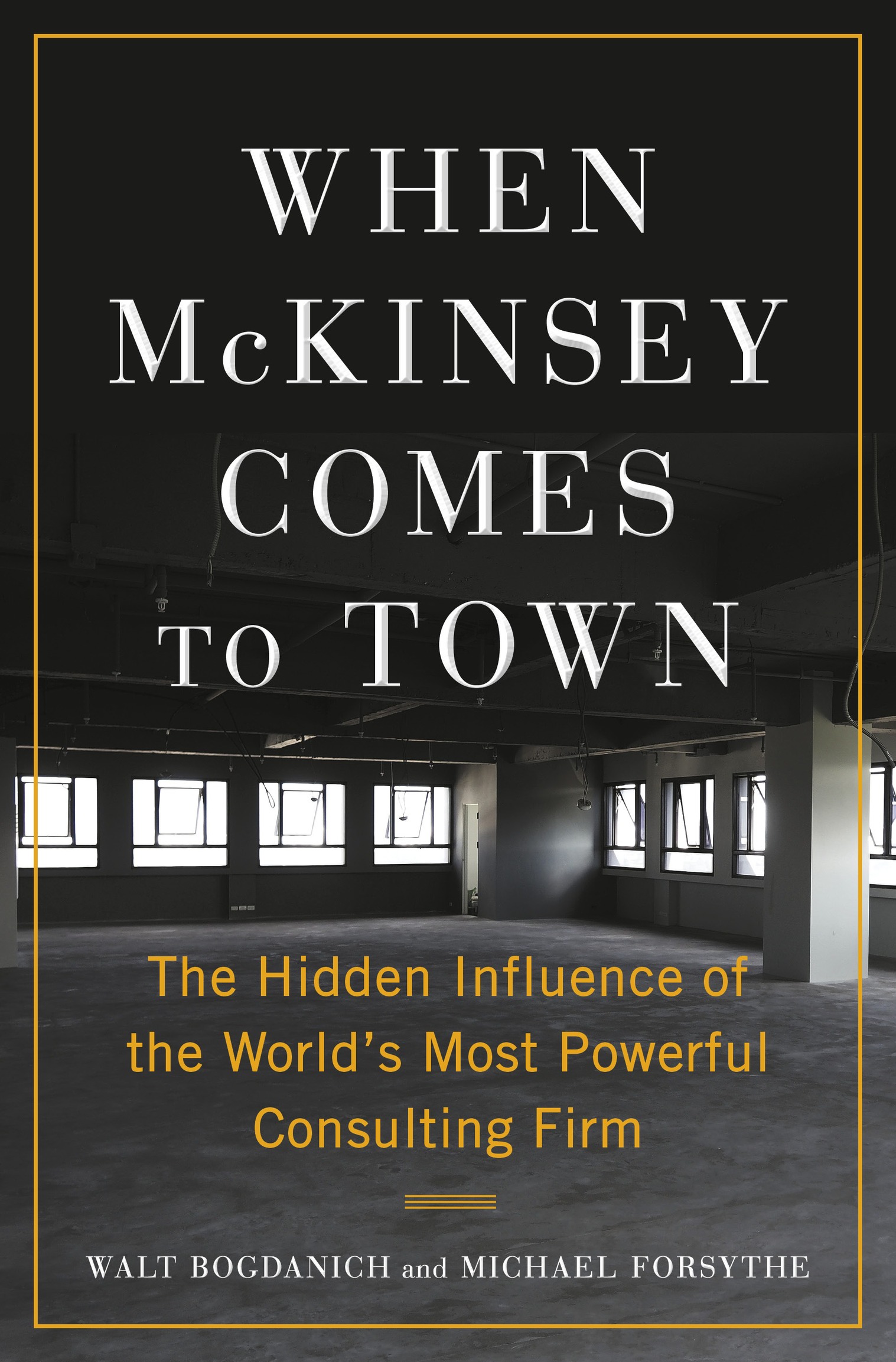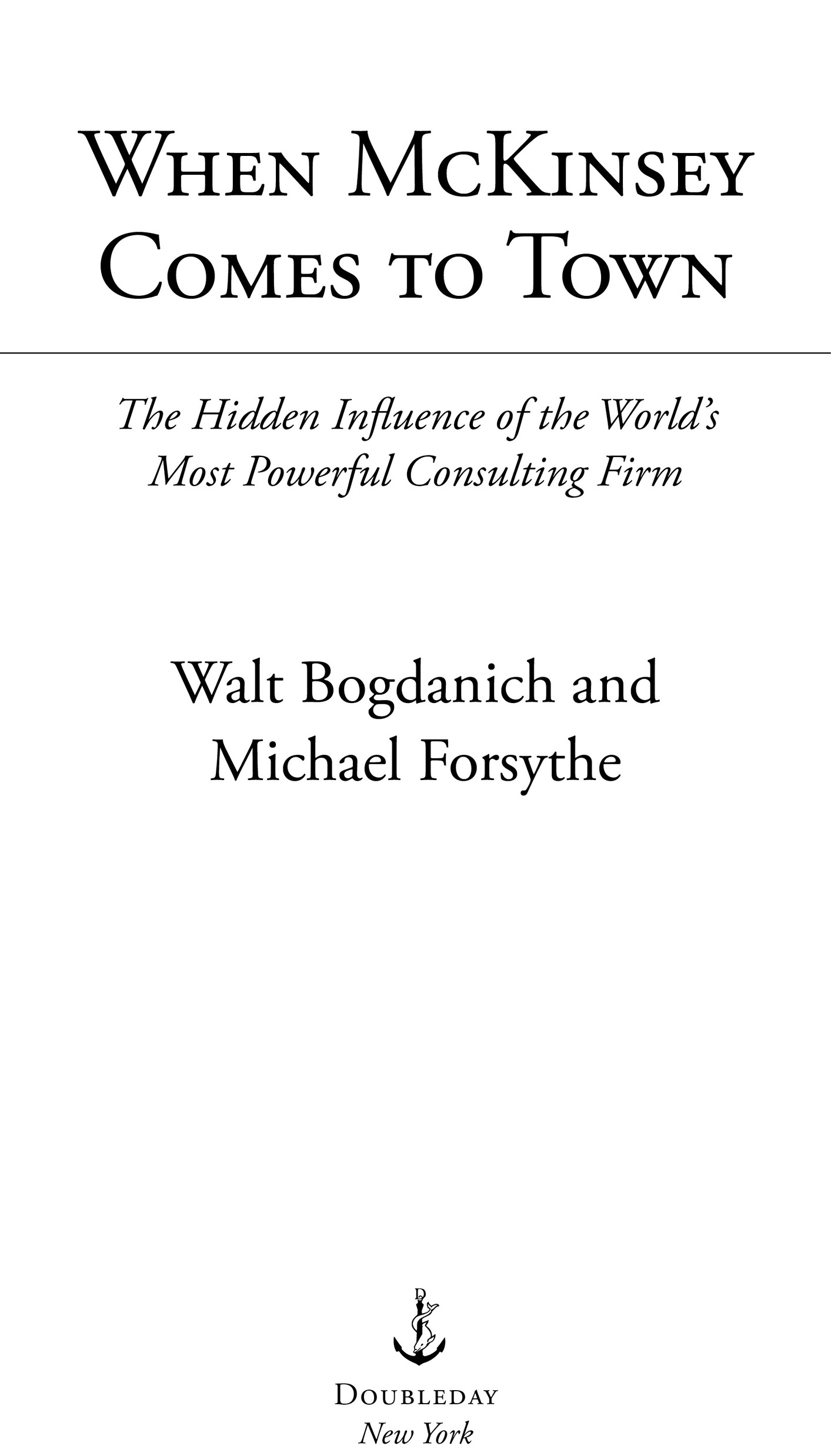All rights reserved. Published in the United States by Doubleday, a division of Penguin Random House LLC, New York, and distributed in Canada by Penguin Random House Canada Limited, Toronto.
Doubleday and the portrayal of an anchor with a dolphin are registered trademarks of Penguin Random House LLC.
Names: Bogdanich, Walt, author. | Forsythe, Michael, author.
Title: When McKinsey comes to town : the hidden influence of the worlds most powerful consulting firm / Walt Bogdanich and Michael Forsythe.
Description: First edition. | New York : Doubleday, 2022.
Identifiers: LCCN 2022008480 | ISBN 9780385546232 (hardcover) | ISBN 9780385546249 (ebook) | ISBN 9780385549448 (open market)
Subjects: LCSH: McKinsey and CompanyInfluence. | Industrial management. | Business consultants.
Introduction
When McKinsey Comes to Town
I n Gary, Indiana, just past the rusting bridges, peeling paint, and railroad switching station sits a green well-tended plot of land that seems oddly out of place. It is a grassy knoll of bushes and trees overshadowed by the drab, hulking remains of a plant run by what was once the worlds biggest, most profitable company, the U.S. Steel Corporation.
To the right, a towering furnace and smokestacks rise high against the northeastern sky. Basic steel is made there, forged in heat so intense the metal resembles white-hot lava flowing from a volcano. Nothing is soft or forgiving, only concrete, fire, and metal. To the left, rows of buildings with gabled roofs stretch to the western horizon. This is where steel is treated to make it less brittle before rolling it into massive coils for shipment to places near and far.
Occupying seven miles of lakefront, the steel plant has two hundred miles of railroad tracks, its own hospital, fire department, and police force. In years past, the company did its civic duty by sending workers with good voices and top hats to sing Christmas carols at grade schools across the city.
Inside the green oasis is a granite memorial with a book describing how 513 people died from accidents inside the steel mill. This book of the dead, covered in thick plastic and soot, tells of workers crushed by railroad cars, trucks, and steel. Others fell to their death, were torn apart by explosions, asphyxiated, burned, buried alive, and even drowned. Forty-one died by electrocution. The labor reporter Joseph S. Pete wrote that steelworker funerals are often closed-casket affairs. The book of the dead explains why.
Gary once held the promise of twentieth-century industrial America, a melting pot of racial and ethnic groups in pursuit of a better life, money for college, paid vacations, and pensions. From this emerged a solid middle class, two Nobel Prize winners, and the Jackson Five, as well as pollution that befouled the air and waterways.
In the last quarter of the twentieth century, the companys fortunes fell sharply because of cheap foreign steel, old equipment, and suspect management. The workforce dropped below eight thousand. Departments were closed or pared down.
The decay spread to Gary, the city U.S. Steel founded more than a century ago as a triumph of scientific planning. By the end of the century, Gary had descended into a landscape of abandoned office buildings, stores, and churches. Rather than spend money it didnt have to tear them down, Gary rented the locations to crews filming postapocalyptic and horror movies, including A Nightmare on Elm Street and Transformers. Even a scene from the miniseries Chernobyl was filmed there.
Crime spiked, and Garys population dropped to 69,000 from a high of 177,000 in 1960. Billboards along the steel mills southern border reflect a population that had lost its moorings. Shackled by Lust? Jesus Sets You Free, reads one, followed by ads for a strip club, an injury attorney, and a casino.
The year 2014, however, brought Garys steelworkers a glimmer of hope. The companys new chief executive, Mario Longhi, hired an elite consulting firm, McKinsey & Company, to inject new ideas into the aging manufacturer. For decades McKinsey sold clients on its reputation as a firm that delivered scientific solutions to complex problems. Blue-chip companies and governments around the world hired its consultants, as did the CIA, the FBI, and the Pentagon, among others, believing McKinsey had the wisdom and wherewithal that their managers lacked.
McKinsey came to U.S. Steel with the goal of restoring the steelmaker to its iconic status as a company that built the nations bridges, buildings, and weapons that defeated Americas enemies. With McKinseys help, U.S. Steel promised to recapture that spirit through a relentless focus on economic profit, our customers, cost structure, and innovationall without sacrificing safety or harming the environment. Garys labor force had little idea of what to expect from these highly paid consultants, some graduates of Ivy League business schools.
But steelworkers would learn soon enough, as did others before them, what can happen when McKinsey comes to town.
Construction on U.S. Steels Gary plant had begun in 1906 under the direction of the companys chairman, Elbert Gary, a former judge who wanted the city to bear his name, though he did not want to live there himself. Called a dour moralist by one historian, Judge Gary cared less about the welfare of residents than about the efficiency and profitability of his steel mill.
Judge Gary sought out European royalty and collected Renaissance art, while steelworkers were stuck living in the patch, a raw, disease-infected district that had two hundred saloons with names like Bucket of Blood. They worked twelve-hour days, seven days a week. A church group called this eighty-four-hour workweek a disgrace to civilization, and a congressional committee termed it a brutal system of industrial slavery. Judge Gary didnt much care. He opposed unions, considered labor leaders his social inferiors, and believed his employees preferred to work as many hours as possible.
The founder of McKinsey & Company, James O. McKinsey, an accountant from the Ozarks, also believed in efficiency and profits. His young company began advising U.S. Steel in the Great Depression. The company quickly became the firms biggest client; more than forty consultants were assigned to the account. At one point, U.S. Steel generated at least half the billings in McKinseys New York office. When the Wagner Act of 1935 required companies to negotiate with workers seeking better pay and safer working conditions, McKinsey set up a special unit to advise corporate executives on how to deal with their demands. But McKinsey eventually lost its biggest supporter at the steel company, and in the 1950s the two companies moved apart. Sixty years later, the iconic steelmaker was floundering, and U.S. Steels new chief executive, Mario Longhi, decided to restore their close relationship.


